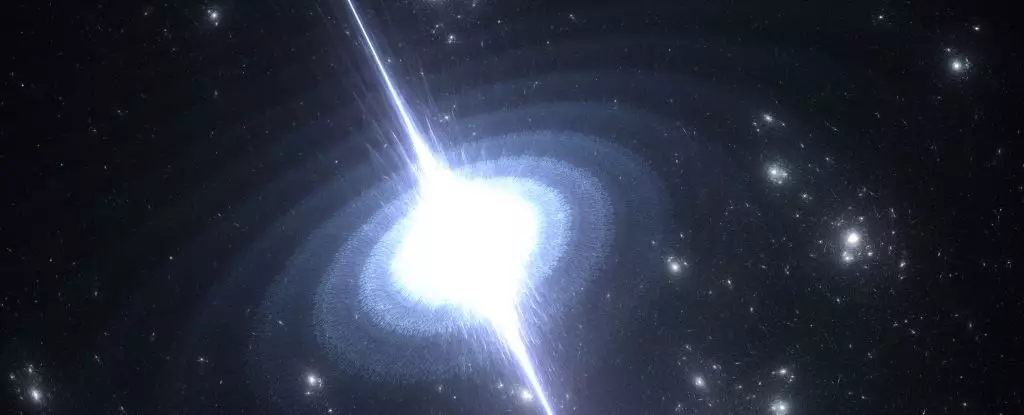The universe is a vast repository of mysteries, and dark matter remains one of its most enigmatic. The search for a hypothetical particle known as the axion persists, with intriguing new avenues emerging from an unexpected source: neutron stars. These incredibly dense celestial objects could play a critical role in uncovering the secrets of axions, providing crucial insights into the fundamental workings of the cosmos.
Neutron stars emerge from the spectacular demise of massive stars, undergoing supernova explosions that leave behind cores with astonishing densities. Imagine a mass greater than that of the sun condensed into a sphere merely a few kilometers wide; this is the astonishing reality of a neutron star. Such extreme conditions lead to intense gravitational and electromagnetic phenomena that not only affect their immediate environment but possibly influence the fundamental particles throughout the universe.
The lifeblood of a neutron star is its frenzied rotation. Some neutron stars, termed pulsars, rotate incredibly fast, sometimes completing a spin in just a few milliseconds. As they rotate, these cosmic beacons emit powerful beams of radiation, resembling a lighthouse cutting through the darkness of space. It is within these enigmatic structures that scientists posit the presence of axions—particles that could potentially unravel the riddles of dark matter.
Proposed in the 1970s, axions remain elusive and purely theoretical. Initially conceived to address issues in quantum chromodynamics, axions also emerged as prime candidates for explaining dark matter, a form of matter that cannot be directly observed yet makes up a significant portion of the universe’s mass. These particles have a unique property; they interact weakly with ordinary matter, a trait that contributes to their elusive nature.
The potential significance of discovering axions cannot be overstated. Should they be detected, they could resolve several cosmic puzzles, including the understanding of dark matter’s identity. Notably, axions are theorized to decay into photons under strong magnetic fields, making them “visible” in conditions typically found around neutron stars. This provides a compelling reason to study these cosmic phenomenons.
The magnetic fields surrounding neutron stars are incredibly powerful—trillions of times stronger than that of Earth. This intense magnetic environment is theorized to facilitate the trapping of axions. As these particles accumulate due to the neutron star’s phenomenal gravitational pull, they may generate detectable signals. Research has suggested that axion clouds could form around these rotating celestial objects, persisting for billions of years.
Such clouds could theoretically produce observable characteristics, such as faint light emissions, as photons escape. Investigating these emissions could illuminate the properties of axions, including estimates of their mass. Currently, astronomical observations fail to provide evidence of these axion signatures around known pulsars, leading researchers to conclude that if axions are present, their interactive nature is gentler than anticipated.
The consequences of confirming axion existence could be monumental. Axions are predicted to present a continuous signal in the radio spectrum, a narrow line corresponding to their mass. The absence of this line in existing data could narrow down the possible mass range of axions, refining our understanding of these enigmatic particles. Alternatively, should a dying neutron star eventually release a burst of light due to the mass accumulation of axions, it would offer another incredible insight, although this phenomenon may take eons to observe.
Notably, the lack of evidence for axion signatures around pulsars does not imply their absence; rather, it sharpens the boundaries of our current understanding. By establishing these limitations, researchers lay the groundwork for future observations. The hunt for axions is far from over; indeed, it has only just begun.
As scientists continue their quest to unravel the enigmatic axion, neutron stars present an exceptional opportunity. Their extreme conditions and unique characteristics allow researchers to explore conceivable interactions between matter and proposed particles like axions. Ongoing efforts will likely yield new methodologies and technologies designed to probe deeper into the cosmic fabric, paving the way for a more comprehensive understanding of the universe’s hidden narratives.
Axions could revolutionize what we know about dark matter and the fundamental building blocks of the cosmos. With neutron stars serving as cosmic laboratories, the intrigue surrounding these particles deepens, beckoning astronomers and physicists alike to embark on one of the most significant scientific journeys of our time. As the quest continues, the potential for discovery offers tantalizing glimpses into the universe’s most profound mysteries.


Leave a Reply